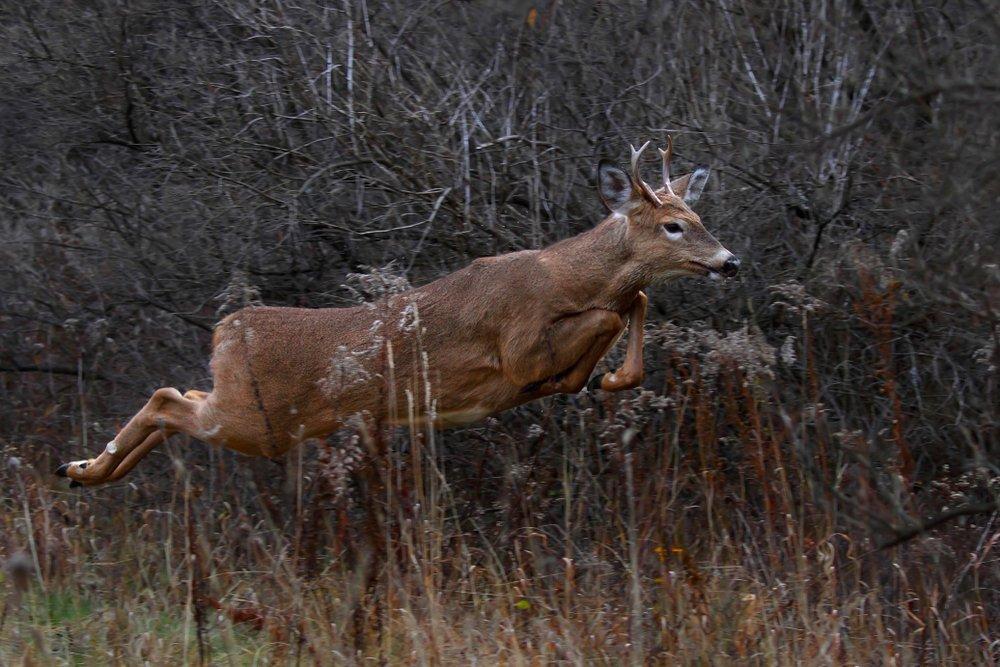Part 2 of 9: These States Might Not Be the Ones You Think They Are
The age structure of the buck harvest is a statistic the Quality Deer Management Association (QDMA) has been tracking for quite some time. Its interests in quality deer management has helped bring awareness to responsible harvest of whitetails across the continent. Luckily, thanks to their annual Whitetail Report, we can see what the data looks like.
According to the QDMA, in 1989, yearling bucks accounted for 62 percent of the total buck harvest. Interestingly, that number had fallen to 35 percent by the end of the 2017 deer season. When breaking it down by state and region, the midwestern states you'd expect to rank highest on this list, simply aren't there, though.
The top five states with the lowest percentage of yearling bucks in the harvest:
- Arkansas: 7 percent
- Mississippi: 11 percent
- Louisiana: 13 percent
- Alabama: 14 percent
- Florida: 17 percent
The top five states with the highest percentage of yearling bucks in the buck harvest:
- Wisconsin: 65 percent
- New Hampshire: 52 percent
- Maryland: 48 percent
- New York: 47 percent
- Virginia: 47 percent
The top five states with the highest percentage of 3½-plus-year-old bucks in the harvest:
- Mississippi: 77 percent
- Arkansas: 74 percent
- Louisiana: 73 percent
- Oklahoma: 66 percent
- Texas: 61 percent
The top five states with the lowest percentage of 3½-plus-year-old bucks in the harvest:
- Wisconsin: 12 percent
- New York: 19 percent
- Vermont: 20 percent
- Tennessee: 20 percent
- Michigan: 22 percent
Looking at things by region was even more intriguing. The midwestern states, where most of your mega-giant deer come from, doesn't rank too well in this category — when logic and reason tell you it should.
In the Southeast, 1½-year-old antlered deer made up 23 percent, 2½-year-old bucks made up 26 percent and 3½-plus-year-olds comprised 51 percent of the total antlered harvest. In the Northeast, 1½-year-olds accounted for 42 percent, 2½-year old deer answered for 33 percent, and 3 ½-plus-year-olds made up 25 percent of the harvest. Again, the Midwest numbers weren't what I expected them to be. 1½-year-old bucks accounted for 39 percent, 2½-year-olds were 23 percent and older age classes accounted for 26 percent — intriguing data, no doubt.
In 2017, the average percentage of the antlered buck harvest that was 1½ years old was 35 percent, which remains near the lowest national percentage ever reported, QDMA said. The fact that only about one in three antlered bucks shot today is 1½ years old is amazing, and the line graph on this page shows how the yearling percentage of the antlered buck harvest in the U.S. has changed during the past 29 years.
In 2017, Arkansas averaged the fewest yearlings (7 percent of antlered buck harvest) and Wisconsin reported the most (65 percent of antlered buck harvest), QDMA continued. Arkansas was the only state in single dig-its, and Wisconsin was one of only two states above 50 percent. As a region, the Southeast averaged the fewest yearlings (23 percent), followed by the Midwest (39 percent) and the Northeast (42 percent). Alabama and Kentucky both had the largest year-to-year decline in harvest percent-age by dropping from 20 to 14 and 30 to 24 percent yearling bucks, respectively. Missouri had the largest year-to-year rise in harvest percentage by increasing from 22 to 36 percent yearling bucks.
2019 Whitetail Report
- New Antlered Buck Harvest Statistics
- The States Tagging the Youngest and Oldest Bucks
- Deer Disease Updates
- Where Deer Urine Is and Isn't Banned
- Laws on Deer Tracking Dogs by State
- New Deer-Related Automobile Accident Trends
- Where Most Non-Resident Deer Hunters Are Going Now
- The Current Status on Deer Processing
- What Fawn Recruitment Rates Look Like Today
Don't Miss: 12 Unethical Shots You Shouldn't Take on Deer
Are you a deer hunter wanting to learn how to accomplish your goals? Check out our stories, videos and hard-hitting how-to's on deer hunting.







